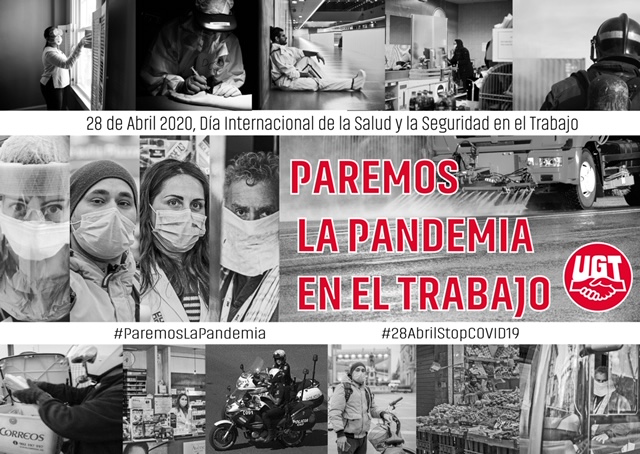Every year April 28 is International Workers’ Memorial Day (IWMD). This is the international trade union day of remembrance and action for workers killed, disabled, injured or made unwell by their work. The focus this year is of course the global COVID-19 pandemic. While everyone is affected by the crisis, many workers are on the frontline.
For #IWMD20 Usdaw is highlighting the risks many frontline workers are taking to help keep the rest of us safe and healthy. Healthcare workers in particular are risking their lives doing their job to take care of the sick. Many others like Usdaw members in supermarkets and delivering the food supply chain are providing essential services and deserve our thanks for everything they are doing. We urge the public to observe a one-minute silence at 11am on 28 April to remember those workers we’ve lost to Covid-19.
Paddy Lillis – Usdaw General Secretary says: “More people are killed at work than in wars. They die because their safety just wasn’t that important a priority. So on 28 April we ‘remember the dead and fight for the living’ by highlighting our all year round campaigning for better health and safety at work.
“Shopworkers and their colleagues in the retail food supply chain are on the frontline of feeding the country during the current crisis. They are providing an essential service in very difficult circumstances, working long hours in busy stores, facing abuse from customers and of course concerned they may contract Covid-19.
“This year we should take time to recognise the heroic efforts they are making in very difficult circumstances, alongside many other frontline workers. We particularly want to pay tribute to the brave healthcare workers and the extreme risks they have to work with. A one-minute silence at 11am tomorrow for those we’ve lost would be a fitting tribute.
“Usdaw continues to work with employers to improve health and safety for staff, particularly those dealing directly with the public. We also call on customers to stay calm, respect shopworkers and practise the necessary hygiene measures to help limit the spread of the virus. We all have to work together to get through this crisis.
“Strong unions are the best protection for workers. Workplaces that have strong union representation typically have much lower fatality, injury and ill-health rates than those that do not. Research in this country and abroad has shown repeatedly that unions make a difference.”
Workers’ Memorial Day – Stop the pandemic at work: www.ituc-csi.org/28April2020
TUC campaign: www.tuc.org.uk/workers-memorial-day
